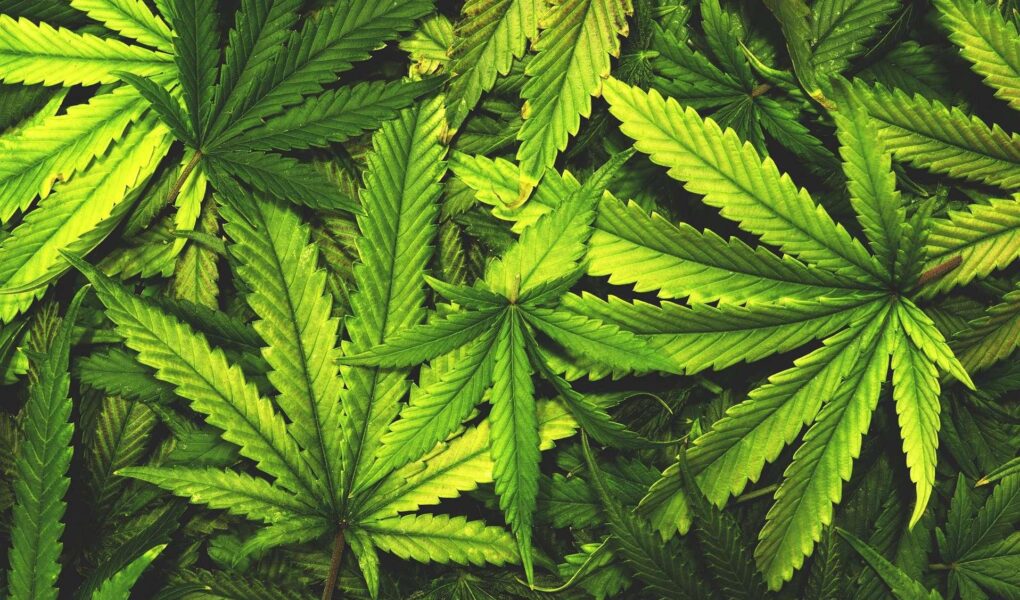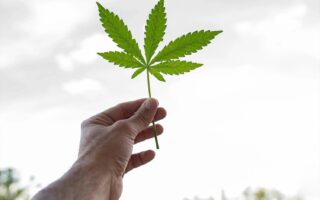In the ever-evolving landscape of cannabis research, one compound has emerged as a focal point of intrigue and investigation: tetrahydrocannabinol, commonly known as THC. As cannabis moves from the shadows of stigma to the forefront of scientific inquiry and public interest, understanding its most active chemical is crucial for unraveling both its therapeutic potential and the complexities of Cannabis sativa itself. This article delves into the fascinating world of THC, exploring its biochemical properties, effects on the human body, and the broader implications of its prominence in the growing cannabis industry. Join us as we uncover the science behind this enigmatic compound and its role in shaping the future of cannabis consumption and medicine.
Table of Contents
- Understanding the Role of THC in Cannabis Potency
- Exploring the Therapeutic Benefits of CBD
- The Synergistic Effects of Terpenes and Cannabinoids
- Navigating Consumption Methods for Optimal Experience
- Q&A
- In Conclusion
Understanding the Role of THC in Cannabis Potency
The significance of THC, or tetrahydrocannabinol, cannot be overstated in the context of cannabis potency. This psychoactive compound interacts primarily with the body’s endocannabinoid system, producing effects that can range from euphoria to changes in perception. THC is not only responsible for the “high” associated with cannabis use but also contributes to the therapeutic effects sought by many medical users. Understanding how THC influences potency can help consumers make informed choices regarding strains and products, enhancing their overall experience.
Factors that affect the level of THC in cannabis include:
- Strain type: Indica, sativa, and hybrids can exhibit varying THC levels.
- Growing conditions: Factors such as light exposure, temperature, and nutrients significantly impact THC production.
- Harvest time: The timing of harvest affects the cannabinoid profile; mature plants yield higher THC concentrations.
To illustrate this further, here’s a simple comparison of THC content across various cannabis strains:
| Strain Name | THC Content (%) |
|---|---|
| Girl Scout Cookies | 18-28 |
| Blue Dream | 17-24 |
| Sour Diesel | 20-26 |
This information not only gives insight into the potential potency of different strains but also shows how variations can cater to specific user needs, depending on their desired effects or medical requirements.
Exploring the Therapeutic Benefits of CBD
The landscape of wellness has been significantly transformed by the introduction of CBD, a non-psychoactive compound derived from cannabis. Many individuals are turning to CBD as a natural remedy for various conditions, ranging from anxiety and chronic pain to insomnia and inflammation. Its anticipated therapeutic properties stem from its interaction with the body’s endocannabinoid system, which plays a crucial role in regulating several biological processes. Research and anecdotal evidence suggest that CBD may help in:
- Reducing Anxiety: Many users report feeling calmer and more relaxed after taking CBD, making it a promising alternative for anxiety management.
- Relieving Pain: Studies indicate that CBD may reduce pain and inflammation, offering potential relief for those with chronic conditions.
- Improving Sleep Quality: CBD’s calming effects can contribute to better sleep hygiene, helping individuals achieve deeper, more restful sleep.
- Enhancing Overall Well-Being: Regular use of CBD is believed to promote a sense of balance and wellness, positively affecting mood and stress levels.
Furthermore, the therapeutic potential of CBD extends to various medical conditions, with ongoing studies exploring its efficacy. Below is a simplified overview of some of the areas where CBD shows promise:
| Condition | Potential Benefits |
|---|---|
| Anxiety Disorders | May help in reducing symptoms and improving mood |
| Chronic Pain | Could alleviate pain and reduce inflammation |
| Sleep Disorders | May enhance sleep quality and reduce disturbances |
| Epilepsy | Evidence supports its use in reducing seizure frequency |
The Synergistic Effects of Terpenes and Cannabinoids
The intricate dance between terpenes and cannabinoids plays a pivotal role in defining the therapeutic potential of cannabis. Terpenes, the aromatic compounds found in many plants, not only contribute to the unique scent profiles of different cannabis strains but also enhance the overall effects of cannabinoids. Some of the most prominent terpenes include:
- Myrcene – Known for its sedative properties, often paired with THC to amplify relaxation.
- Limonene – Offers uplifting effects that can enhance the mood and possibly mitigate anxiety.
- Caryophyllene – Featuring anti-inflammatory benefits, it may complement the pain-relieving properties of cannabinoids.
This synergy between terpenes and cannabinoids creates a phenomenon referred to as the “entourage effect,” where the compounds work together to elevate therapeutic outcomes beyond what isolated cannabinoids can achieve. For instance, a strain rich in both THC and terpenes like Linalool may assist in pain relief and anxiety reduction, providing a multifaceted approach to treatment. Here’s a simple comparison table illustrating some common terpenes along with their potential effects:
| Terpene | Potential Effects |
|---|---|
| Myrcene | Relaxes muscles, promotes sleep |
| Limonene | Elevates mood, reduces stress |
| Caryophyllene | Alleviates inflammation, provides pain relief |
| Linalool | Calming effects, potential anti-anxiety |
Navigating Consumption Methods for Optimal Experience
Understanding the various consumption methods available for cannabis can greatly enhance your experience, allowing you to enjoy the benefits tailored to your personal preferences. Here are some popular methods to consider:
- Vaporization: A healthier alternative to smoking, vaporization heats cannabis to release its active compounds without combustion, providing a smooth inhale and quicker effects.
- Edibles: Consuming cannabis-infused foods can lead to a long-lasting and potent high. However, be cautious with dosing, as the effects can take longer to onset.
- Tinctures: Quick and easy to use, tinctures are alcohol or oil-based extracts that allow for precise dosing and rapid absorption under the tongue.
- Topicals: Perfect for localized relief, cannabis-infused creams and balms can ease pain and inflammation without the psychoactive effects.
- Concentrates: For more experienced users, concentrates such as wax, shatter, or oils offer high potency and can be consumed via dabbing or added to other methods.
Choosing the right method can significantly impact not only the intensity but also the overall experience you have with cannabis. Consider factors such as onset time, duration of effects, and your personal preference for how you want to consume. Below is a simple breakdown of the different methods and their typical onset times:
| Method | Onset Time | Duration |
|---|---|---|
| Vaporization | Immediate | 1-3 hours |
| Edibles | 30-120 minutes | 4-8 hours |
| Tinctures | 15-45 minutes | 2-6 hours |
| Topicals | 1-5 minutes | 2-4 hours |
| Concentrates | Immediate | 1-3 hours |
Q&A
Q&A: Understanding the Most Active Chemical in Cannabis
Q: What is the most active chemical in cannabis?
A: The most active chemical in cannabis is known as tetrahydrocannabinol, or THC. THC is the primary psychoactive compound responsible for the euphoric “high” that many users seek when consuming cannabis.
Q: How does THC interact with the body?
A: THC interacts with the body by binding to cannabinoid receptors in the brain and throughout the central nervous system. These receptors are part of the endocannabinoid system, which helps regulate various physiological processes, including mood, appetite, pain sensation, and memory.
Q: Are there other significant compounds in cannabis?
A: Yes, besides THC, cannabis contains numerous other compounds called cannabinoids, such as cannabidiol (CBD), which is non-psychoactive and has gained popularity for its potential therapeutic benefits. Other important components include terpenes, which contribute to the plant’s aroma and may also play a role in its effects.
Q: What is the difference between THC and CBD?
A: The primary difference between THC and CBD lies in their effects. THC induces psychoactive effects, creating a sense of euphoria, while CBD is known for its calming properties and potential therapeutic applications without the high. This distinction has made CBD increasingly popular for medicinal use.
Q: Is THC legal everywhere?
A: No, THC’s legality varies by location. In some regions, THC is fully legal for recreational and medical use, while in others, it remains prohibited or regulated. It’s important for consumers to be aware of local laws regarding cannabis consumption.
Q: What are some potential benefits of THC?
A: Research suggests that THC may offer various benefits, including pain relief, appetite stimulation, and reduction of nausea. It is often used in medical contexts to help patients undergoing treatments like chemotherapy, where it can alleviate side effects.
Q: Are there any risks associated with THC consumption?
A: Yes, while THC has potential benefits, it can also come with risks. Some users may experience anxiety, paranoia, or impaired cognitive function. Long-term use may lead to dependence in some individuals. It’s essential for users to consume responsibly and be aware of their limits.
Q: How do different strains of cannabis affect THC levels?
A: Different cannabis strains can vary significantly in their THC content. Strains are often categorized as sativa, indica, or hybrid, and each type can have distinct effects based on its specific chemical profile. For example, certain sativa strains may provide uplifting effects, while indica strains are often associated with relaxation.
Q: Can the method of consumption alter THC’s effects?
A: Absolutely! The method of consumption—whether through smoking, vaping, edibles, or oils—can alter how THC affects the body. For instance, consuming edibles often results in a delayed effect, as the THC must be metabolized by the liver before entering the bloodstream, leading to a different and sometimes more intense experience.
Q: What should individuals consider before using THC?
A: Individuals considering THC use should evaluate their health conditions, any medications they may be taking, and their personal history with cannabis. It’s also advisable to start with lower doses, especially for beginners, to gauge tolerance and effects.
Closing Thoughts:
By understanding THC and its role in cannabis, users can make informed decisions regarding their consumption, whether for recreational enjoyment or therapeutic relief. As research continues to uncover the complexities of cannabis, the dialogue around its benefits and risks remains ever-evolving.
In Conclusion
while cannabis is often celebrated for its multifaceted effects and diverse chemical composition, it is the cannabinoid tetrahydrocannabinol (THC) that emerges as its most active chemical. THC’s interaction with the endocannabinoid system unlocks a world of therapeutic potential and recreational experiences, making it a focal point of scientific research and cultural discourse. As our understanding of this complex plant continues to evolve, so too does our appreciation for its myriad compounds and their nuanced effects. Whether for medicinal purposes, recreational enjoyment, or further exploration of its benefits, THC stands at the forefront of cannabis chemistry—inviting us all to delve deeper into its intricacies and reap the potential that lies within. The journey through the cannabis landscape is just beginning, and the exploration of its chemical treasures promises to yield exciting discoveries in the years to come.



